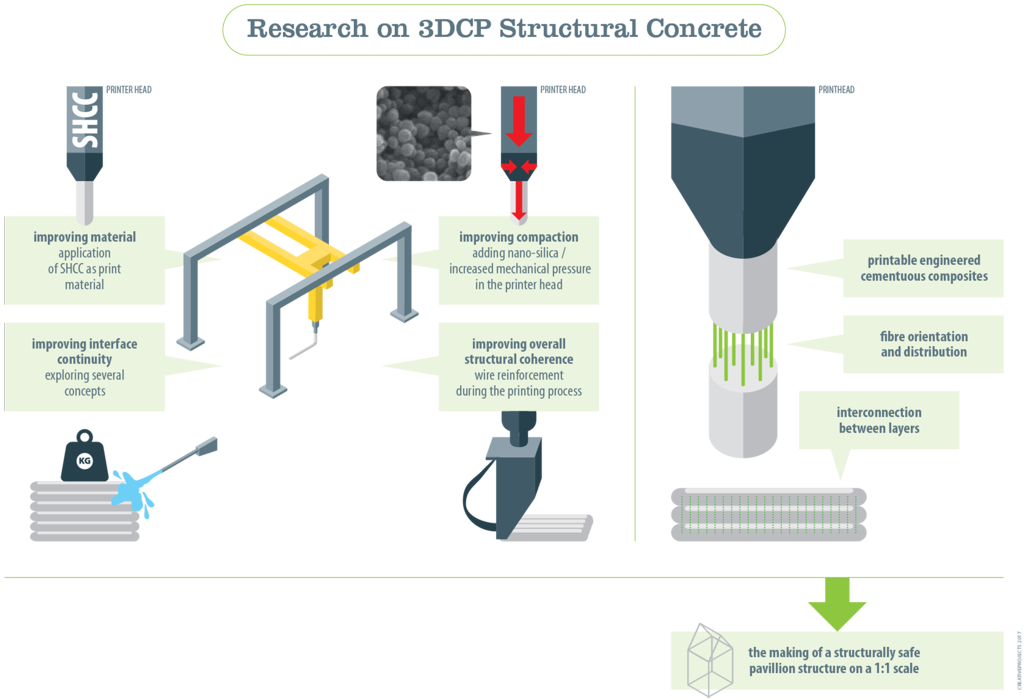Recent years have seen a rapid growth of additive manufacturing methods for concrete construction. Potential advantages include reduced material use and cost, reduced labour, mass customization and CO2 footprint reduction. The 3D Concrete Printing (3DCP) method, under development at the TU Eindhoven, is one of these Additive Manufacturing of Concrete methods. None of these methods, however, has yet been able to produce additively manufactured concrete with material properties suitable for structural applications, i.e. ductility. In order to make additive manufacturing viable as a production method for structural concrete, a quality leap has to be made. Research at the TU Delft has resulted in a fiber reinforced strain hardening cementitious composite (SHCC). Applying this to 3DCP could provide the basis of a solution.
The concepts to be applied are:
- Application of SHCC as print material,
- Improving compaction by adding nano-silica and/or mechanically increased pressure in the printer head,
- Improving overall structural coherence and ductility of elements by introducing wire reinforcement simultaneously during the printing process, possibly across the interface,
- Improving interface continuity. Several concepts need to be explored, including pressing subsequent layers into each other, chemically (re)activating the surface, and/or removing the top film of the surface, mechanically or e.g. by water jet.
It is the intention of the project to finalize the project with a structurally safe 1:1 scale pavilion type structure.

Team:
Eindhoven University of Technology
Prof. dr. ir. Theo Salet, Zeeshan Ahmed MSc
Delft University of Technology
Prof. dr. ir. Erik Schlangen, Dr. Branko Savija



